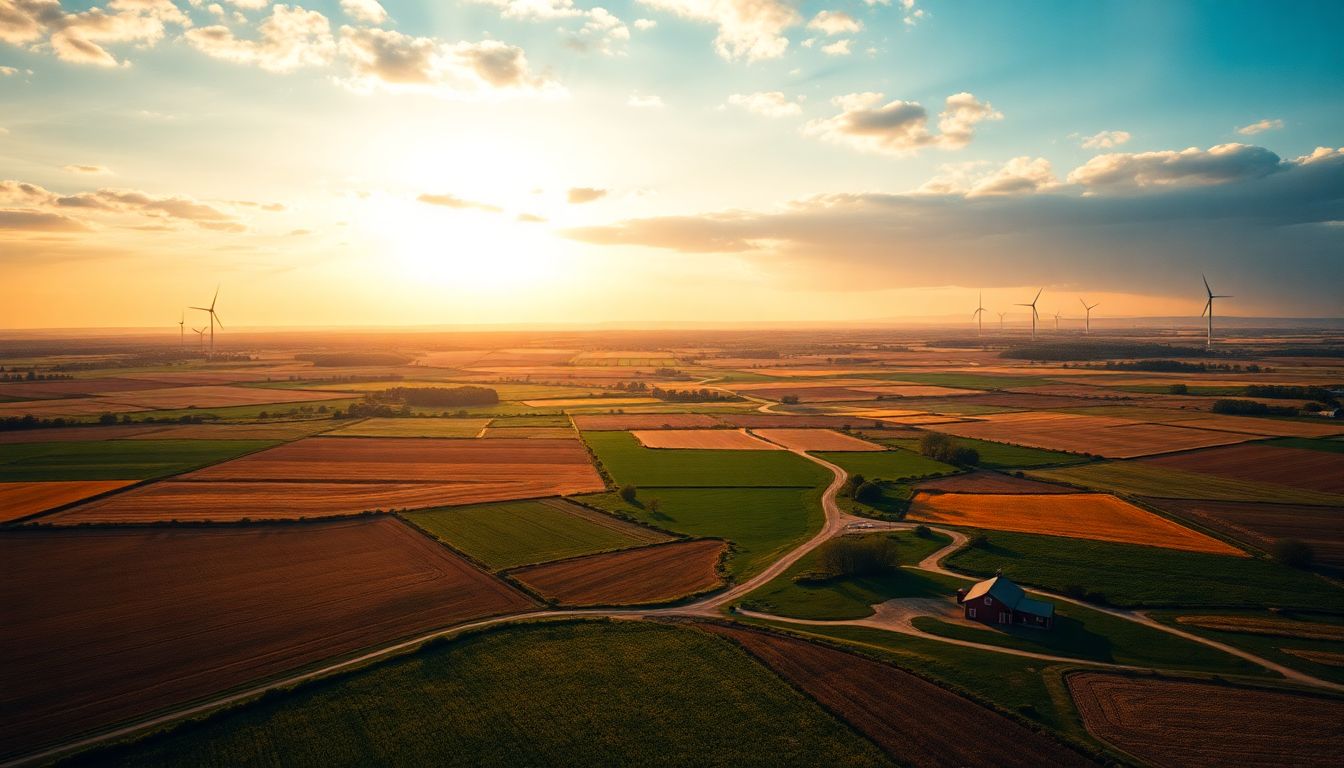Introduction
Agricultural land is the lifeblood of the U.S. economy. It feeds, fuels, and employs the country. With the nation’s growth, land prices assume greater importance to farmers, investors, and policymakers alike. Recently, land prices have changed here and there for many reasons. Trends would always be analyzed so that wise decisions wouldn be made.
Article Content: Factors Affecting Agriculture Land Prices USA
Market Demand and Supply Dynamics
From farmers, the requirement for land gets determined by the profitability of the crop and livestock requirements. When a farm becomes more profitable, the demand will be much higher for having land, while investors buy the land for the income or future gain. As the supply becomes contracted-indicating that there is a smaller amount of land available-the prices tend to go higher. When there is demand for land and not much of it, prices will rise.
Geography and Regional Variance
Location makes a big difference in price when it comes to land. For example, farmland in Iowa is cheaper than land in California. States close to big cities or good infrastructure usually demand higher prices. The Midwest is generally cheaper with good, cheap land, while the West offers very valuable land that has irrigation and better soil.
Land Quality and Size
For example, much will depend on the nature of the soil, the water accessible or available, and the topographic features. Fertile soils and a sizable amount of water would raise the price of the land. Large plots are usually more expensive in total but much less cost per acre. Small, but premium plots close to markets can attain prices as high as the sky.
Policy, Regulations, and Incentives
The rules of governments determine the prices of land. Subsidies and conservation programs raise land value. Strictures on land use or environmental restraints limit development and consequently reduce the price. Policies changed, over years, regarding how land would be valued and sold.
Economic Factors and Interest
When the economy is strong, land prices tend to go high. Inflation and low-interest rates ease borrowing for these investors, contributing to buying land. If commodity prices like corn or soybeans increase, land becomes worth investing in for profits through farming.
Now Trends and Market information about Agriculture Land Prices
Recent price trends of agricultural real estates
Currently, the average amount of money paid in the U.S. for farmland stands at about $4,000 to $5,000 per acre. However, that varies enormously across regions of the country. Over the past ten years, the trend has consistently been uptick, even though some places see sharper gains. USDA and real estate firms continue to report constant appreciation, especially for properties in great demand.
Analysis of Regional Markets
Iowa: Prices are around $7,000 per acre on the basis of the rich soils and high yields.
Texas: Priced per Acres- $2,500-$4,500, depending on the land quality and location.
California: Highest premium land in Central Valley could touch $20,000 per acre or more.
Midwest vs. Southeast: Less expensive middle land, more expensive southeastern land now because of new farming methods and rising prices.
Some aspects are quite promising now, with the investments made in irrigation or technology, or are becoming near cities with growth.
The Effects of Technological and Market Innovation
Through GPS and drones, efficiency and land value grow stoutly improved in agriculture. Market tools such as crop insurance and futures trading assist farmers and investors in risk management. Such innovations increase land attractiveness and could push up prices.
Investing in America Agriculture Land
Opportunities & Related Risks
Agricultural land purchases promise a steady income, appreciation, and tax benefits. Buying farmland comes with risks as well. In case of a crop price decline or bad weather, farming returns can decline. Policies affecting land use and taxes may change in government. Environmental conditions such as drought can also risk returns.
For Investors’ Tips
Investigate the soil characteristics, water access, and legal rights in the area before purchasing.
Diversify investment across regions and land types.
Use market information and expert advice to inform decisions for purchases.
Long-term trends come to think about, and not just short-term profit.
Future Outlook and Projections
The overwhelming majority of views expect land prices to rise after ten years. Climate change would potentially reduce the attractiveness of some areas, but technological advances will probably lead to the opening of new farming areas. Changes in the policies surrounding agricultural subsidies could have an impact at the same time on future pricing. Patience and careful planning are the keys to success in land investment over the long term.
Conclusion
What seems still more important is that knowledge could help make more informed decisions regarding what seems to drive U.S. agriculture land prices. Obviously, locations, land quality, and government policies are among them. Current trends tend to indicate steady growth on all fronts, though in particular areas, there may be higher demand. Whether a farmer or an investor, being aware of all dynamics is critical. Keep track of data on the markets, changes in regions, as well as new technologies. The land market is dynamic. If you do your groundwork now, you’ll find the opportunities and avoid the hard places. The future is exciting but get ready to act intelligently.
